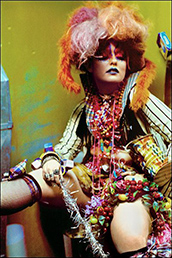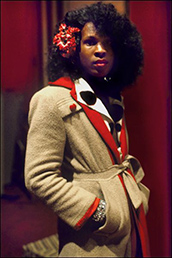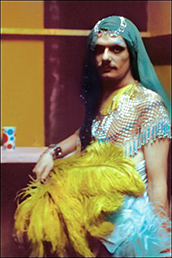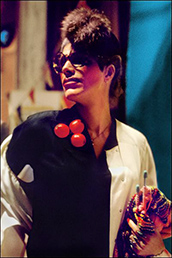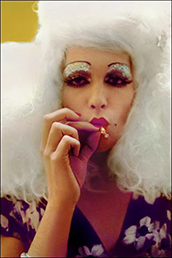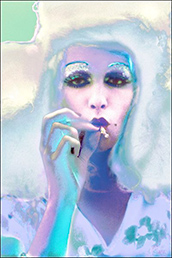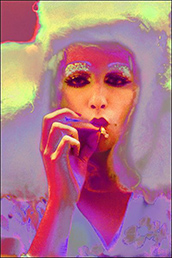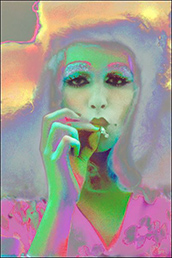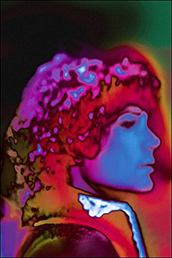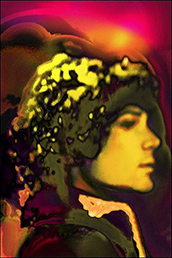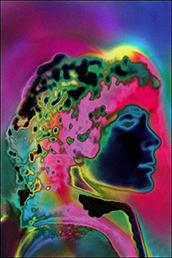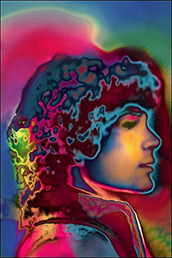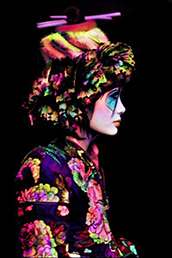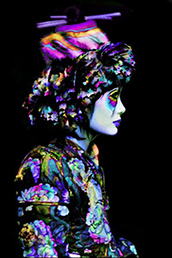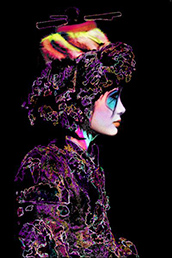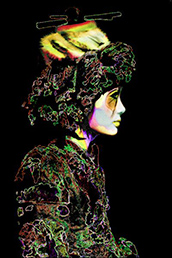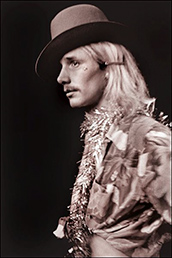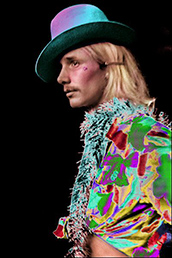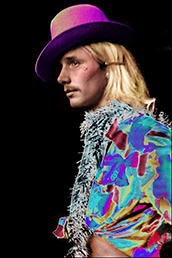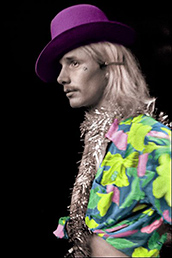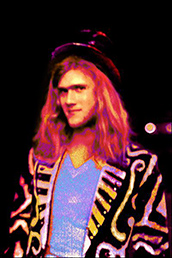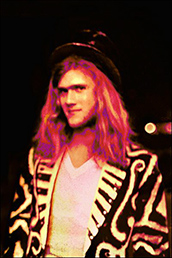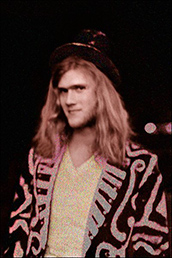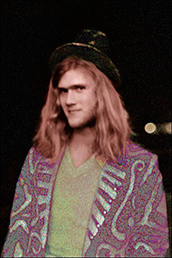|
|
|
|
|
|
|
|
|
|
||||||||||||||||||||||||||||||||||||||||
|
|
Return to the Photography Gallery | |||||||||||||||||||||||||||||||||||||||||||||||
Time Out of JointAn introduction to the photographs by Steven Wolf August 24, 2011 Among the image-makers who came under the Cockette’s spell Roger Arvid Anderson’s little-known photos are distinctive for their Vanity Fair vibe and their colorized surfaces, and for the way they tag along on the Cockette’s bumpy ride back and forth through history. When he came to San Francisco, the 25-year old native of St. Paul, Minnesota saw himself more as an artist than a photojournalist. Like other gay émigrés, he gravitated to Polk Street, the Polkstrasse as it was then known, for the way it reincarnated the spirit of Weimar and Dada cabaret. While he was too young to have a seasoned professional’s mastery of the moment, he did have a definite purpose in mind for the Cockettes: to use them as models for expressionist paintings that would capture the San Francisco retread of Germany between the wars. In 1972 Anderson attended four shows and photographed three of them. He used his backstage access to the Palace Theater, courtesy Goldie Glitters, to photograph the Cockettes as though they were on a Vogue magazine shoot. He got down the usual Cockette flamboyance -- something between boredom and giddiness. He caught a sense of the soulful Sylvester’s interior world, and he made some iconic looking photos of the beautiful Johnny. But he also secreted an interesting distance, an overlay: in some of Anderson’s photos the Cockettes look like a happy commercial for gender rebellion rather than people busy with the difficult, crazy, communal business of counterculture revolution. Regardless, Anderson’s photos were largely unusable. Shooting with 35mm color film in dim light, they were too dark to print. The negatives disappeared into a dark drawer and Anderson forgot about them.
End of story, except it’s thirty-five years later, and the Cockettes are back in the news. Anderson rediscovers his trove and begins to reconstruct their surfaces using Photoshop. He no longer considers them source material for paintings but as digitally enhanced images that are artworks in their own right. Licensed by the Cockette’s audience participation ethos, Anderson jumps on stage. He goes beyond simple color-correction and juices the photos with psychedelic chromaticity as a way of recapturing both the chemical haze of the time and the Cockette’s wild fashion palette. Now the images reference fan fiction, vernacular photo tinting, as well as Ted Turner’s 1980’s colorizing attack on black and white American movies. Time is also deepening the significance of Anderson’s photos. The Cockette revival, stemming from the release of a thrilling documentary, is creating a repressed sublimation – big time. What was once an ethereal thing – a spiritual, existential, transgressive, intangible thing – a thing created by amateurs in their free time and lovingly given away is now a collectible, an expensive theater seat and a professionally designed object of fashion, which must be purchased with funds accumulated through conventional work drudgery. The visuals are still there but the commitment, the consequences of being a Cockette are mostly gone. Being a gender rebel today may get you into a chic nightclub with $20 drinks, but not an 11-day LSD party during which you will lose your clothes if not your mind. The fashion forward emphasis in Anderson’s photos that seemed innocuous in 1972 looks prophetic in 2011. That being said, the Cockettes were tricksters. Their magic created a field around them that complicated and confused everything that was drawn into it, including Anderson’s photos. Unemployed, drugged out and off the clock, time unfolded differently for them than it did in the straight world. Smack in the middle of Rock and Roll’s golden age, they danced and performed to music inspired by the 1920’s and 30’s. With their Victorian/hippie/mardi-gras/flapper synthesis, they helped invent “do it yourself” theater as well as the taste for recycled vintage clothes. For the Cockettes, life wasn’t a one-way trip to retirement and a gold watch. It was a labyrinth to get lost in. Many of them did and never got out, literally disappearing and dying very young. Anderson’s Photoshop time warp of the Cockette’s time warp echoes their sculpting with time. It reanimates that Cockette disruption of useful fictions like “progress” and the “the new,” and clouds the lens through which we look back on history. In the Cockette’s world, and Anderson’s version of it too, history doesn’t go forward, it circles back on itself like a ring of smoke blown from a communal joint.
|
||||||||||||||||||||||||||||||||||||||||||||||||
Images © 2012 Roger Arvid Anderson, Text © Steven Wolf, 2011 All Rights Reserved |
||||||||||||||||||||||||||||||||||||||||||||||||
